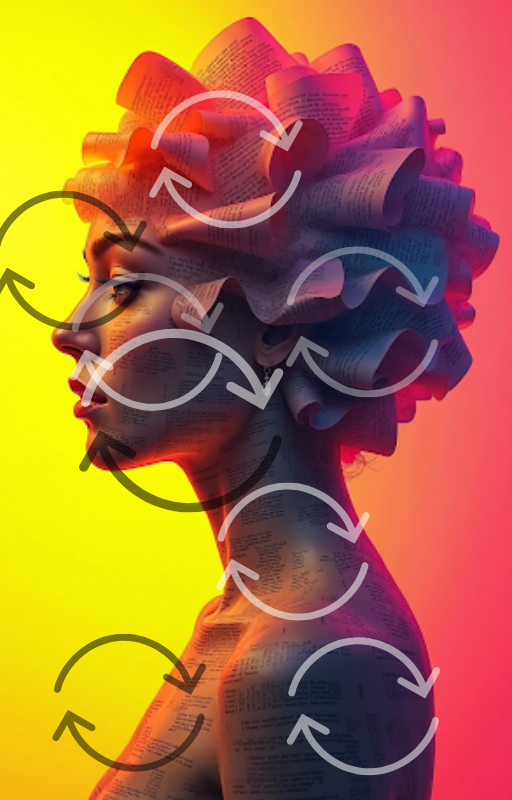Blog

The Damage: A Society Poisoned by Distrust
The toxic combination of information pollution (overload of low-quality, misleading, or false information) and information fragmentation (audiences isolated in ideological/algorithmic echo chambers) creates a societal ecosystem dominated by distrust, skepticism, and cynicism.
The damage is profound and multi-layered. Society turns into a chaotic landscape where truth is obscured, and everyone becomes both predator and prey. We all have a need to feel secure by having a degree of predictability in our lives. The question is “how can we have that when we do not have a trustworthy source or reference?” The danger is that we begin to confuse hearsay with fact and familiarity with trust.
- Paralysis of Collective Action: When no shared facts exist, solving complex problems (climate change, pandemics, economic crises) becomes impossible.
- Example: During a pandemic, widespread distrust in official health guidance and scientific consensus leads to several problems. For example, low vaccination rates and rejection of public health measures, prolonged the crisis and cost millions of lives.
- Erosion of Social Cohesion & Trust: Cynicism corrodes the fundamental glue holding society together – trust in institutions, experts, media, and even neighbors.
- Example: Communities fracture as neighbors view each other with suspicion based on consuming opposing, fragmenting narratives about social issues (e.g., immigration, crime). These alternative views of reality fuel hostility instead of dialogue.
- Weaponization of Information: Distrust creates fertile ground for malicious actors to exploit confusion and fear. Facts become irrelevant; narratives are tools of power.
- Example: Foreign actors or domestic extremists spread divisive disinformation (pollution) by targeting specific fragmented groups online. Such weaponization amplifies social tensions or manipulates elections.
- Cognitive Exhaustion & Apathy: Constant bombardment with conflicting, low-quality information and the effort required to discern truth leads to mental fatigue. Cynicism (“They’re all lying anyway”) breeds apathy and disengagement.
- Example: Voters, overwhelmed by contradictory claims and distrusting all sources, simply disengage from the political process, weakening democracy.
- Vulnerability to Exploitation: Deep skepticism makes people susceptible to grifters and demagogues who position themselves as the only “truth-tellers” against a corrupt “system.”
- Example: Scammers peddle fake cures or investment schemes, explicitly preying on distrust in mainstream medicine or finance, promising “secret truths” to the disillusioned.
Who is the Prey? Who is the Predator? It’s Not Simple!
In this poisoned ecosystem, the lines blur. Everyone is vulnerable, and many play multiple roles:
- The Intentionally Malicious Predator:
-
-
- Who: Bad-faith actors (propagandists, hostile states, scammers, extremist leaders).
- Prey: Anyone susceptible to their manipulated narratives. They actively create pollution and exploit fragmentation.
- Goal: Power, profit, chaos, ideological victory.
-
- The Unwitting Predator (Amplifier):
-
-
- Who: Individuals sharing misinformation without verification, partisan media prioritizing outrage over accuracy, algorithms prioritizing engagement over truth.
- Prey: Their own audiences and the broader information ecosystem. They spread information pollution and reinforce fragmentation, often driven by confirmation bias, profit motives, or simply carelessness.
- Goal: Often engagement, clicks, affirmation, or unintentional bias reinforcement.
-
- The Primary Prey (The Disillusioned & Vulnerable):
-
-
- Who: Those overwhelmed by the noise, lacking critical media literacy, deeply cynical, or specifically targeted by malicious actors (e.g., marginalized groups, the elderly).
- Vulnerability: They are consumed by the polluted information, become paralyzed by distrust, and are easily manipulated or radicalized within their fragmented bubbles. Their trust is eroded, their agency diminished.
-
- The Secondary Prey (Society & Institutions):
-
- Who: Democracy itself, scientific progress, public health, education, journalism, social stability.
- Vulnerability: They are undermined by the pervasive distrust and cynicism they helped create (through failures, scandals, or opaque operations) or that was weaponized against them. Their legitimacy and ability to function are the ultimate casualties.
The Crucial Twist: Everyone is Both
- The “Prey” become Predators: A citizen radicalized by disinformation in their fragmented bubble then becomes an amplifier, spreading toxicity and distrust further.
- “Predators” become Prey: A cynical partisan media outlet focused on profit may find its own audience turning against it, or its narrative being hijacked by even more extreme actors.
- Institutions become Prey & (Unwitting) Predators: Governments losing trust due to past failures (making them prey) may then contribute to information pollution through clumsy communication or secrecy, further fueling the cycle (becoming unwitting predators).
Conclusion
Information pollution and fragmentation, fueled by distrust, skepticism, and cynicism, create a self-reinforcing doom loop. The damage is existential: it cripples our ability to discern truth, cooperate, solve problems, and maintain a functional society. There are no pure heroes or villains.
Malicious actors deliberately hunt. Institutions and individuals, often unintentionally, pollute and fragment the landscape. And ultimately, everyone, individuals, communities, and the very fabric of society, becomes both predator and prey in a chaotic struggle where shared reality is the first and most devastating casualty.
Breaking this cycle requires rebuilding trust through transparency, media literacy, algorithmic accountability, and a collective recommitment to truth-seeking over tribalism.

